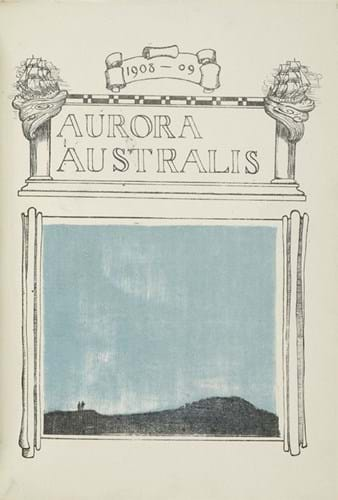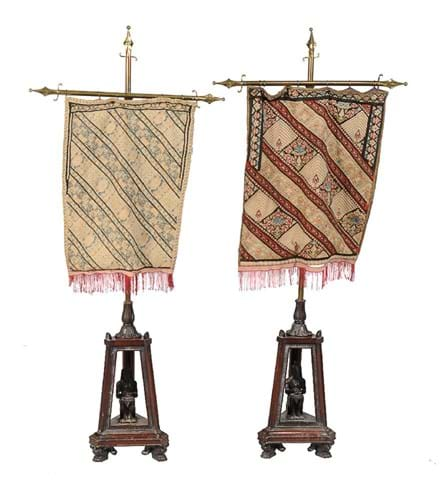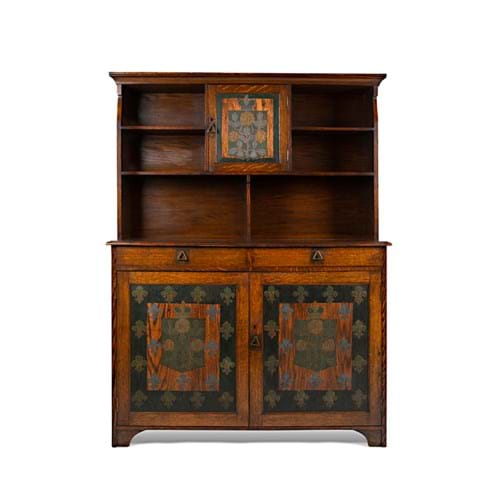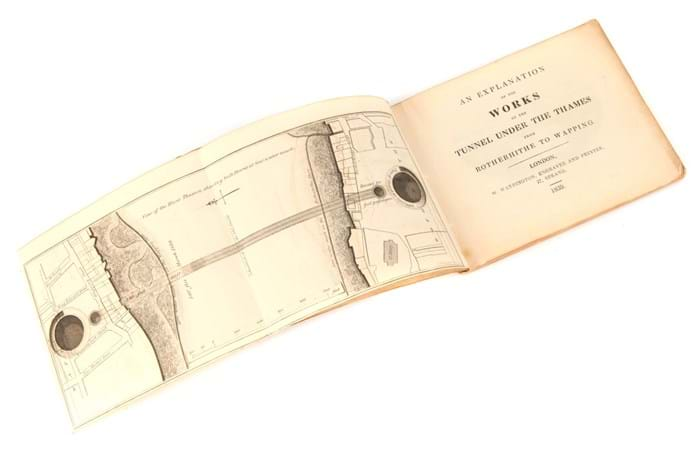1. Chocolate stirrer
By the late 17th century, chocolate was a fashionable drink throughout Europe, believed to have nutritious, medicinal and even aphrodisiac properties. To prepare it properly, paraphernalia was required.
A molinet is a stirring rod normally for hot chocolate, which was put through the lid of a chocolate pot. This rare silver example is by John Hugh Le Sage, London 1739 and carries an estimate of £5000-7000 at Woolley & Wallis’s silver and vertu sale in Salisbury on October 30. A similar molinet, made by Anthony Nelme, London 1719 sold earlier this year at Denham's of Horsham, for £4600.
2. Aurora Australis
A copy of the first book ever written, printed, illustrated and bound in the Antarctic is coming up for sale in Chicago. Ernest Shackleton’s Aurora Australis is estimated at $60,000-80,000. The 94-leaf book was produced during Shackleton’s 1908-9 Nimrod Expedition to the Antarctic as a way of keeping the expedition members occupied during the winter months. It is one of around 80 recorded copies.
The publishing of Aurora Australis was co-ordinated by Ernest Joyce and Frank Wild. George Marston provided illustrations and Bernard Day made the bindings from wooden crates used for provisions. This copy is being sold from the collection of the adventurer Steve Fossett. Leslie Hindman’s October 31 Chicago sale features works from his adventure and exploration library. The auction record is held by Sotheby’s which in 2015 sold a copy from the Franklin Brook-Hitching library for £98,000.
3. Egyptian revival pole screens
Auction house Dreweatts has teamed up with interior and architecture designer Mark Gillette ahead of its October 31 interiors auction. Gillette has created room sets at the Donnington Priory saleroom using pieces from the sale which includes around 46 lots from Grade II listed Georgian country house Kingstone Lisle Park followed by a selection of contents from a property in Cheyne Walk, London. The typical country house furniture from Kingstone Lisle Park includes this pair of 19th century Egyptian Revival pole screens with triform bases carved with figures of seated Pharaohs. They are estimated at £600-800.
4. Oak dresser
Furniture by the Scottish designer and Arts & Crafts polymath Henry Taylor Wyse (1870-1951) does not appear on the market too often. However, this 4ft 2in x 5ft 6in (1.27 x 1.69m) decorated oak dresser with painted gesso decoration will go under the hammer in a Decorative Arts and Design from 1860 sale at Lyon & Turnbull in Edinburgh on October 31. The piece, which is guided at £4000-6000, was designed in c.1900 and made in collaboration with maker William Middleton (1838-1919) for the Scottish Guild of Handicraft.
5. Thames Tunnel booklet
Marc Isambard Brunel’s (1769-1849) own copy of a booklet on the Thames Tunnel will feature in a sale of photographica and science instruments at specialist auction house Flints. Titled ‘An Explanation of the Works of the Tunnel Under the Thames from Rotherhithe to Wapping’ and illustrated with engineering diagrams and architectural plans, the booklet was produced halfway through the project, probably to drum-up public interest.
The copy, which is inscribed to the inside cover in Brunel’s handwriting with extra pencil notes and corrections, is estimated at £400-600 in the sale held in Stoke Newington, London, on October 31-November 1. The tunnel was built between 1825-43 using tunnelling shield technology invented by Brunel and Thomas Cochrane. Brunel’s famous son, Isambard Kingdom Brunel, worked on the project.










